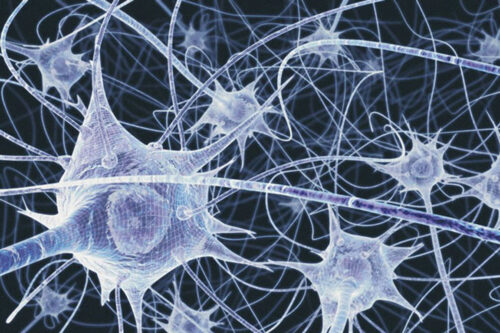Image courtesy of Flickr.
There are more synapses in the human brain than there are stars in the Milky Way. The developing brain manages to wrangle and organize over one hundred trillion neural connections—many orders of magnitude greater than the number of base pairs in our genome. Deciphering how the body constructs such mind-bogglingly complex cellular structures might demystify psychiatric diseases and the evolution of the brain. In a recent study published in Nature, researchers from the Yale School of Medicine identified a small signaling molecule, retinoic acid, that plays a key role in the development of the prefrontal cortex.
Located in the front of the human brain, the prefrontal cortex regulates complex behavior, personality expression, and decision making. Compared to other animals, anthropoid primates possess enlarged prefrontal cortices. To identify genes that are uniquely upregulated in the prefrontal cortex, the researchers analyzed transcriptome data—information regarding gene expression across different brain regions—from databases including BrainSpan and PsychENCODE. They identified 125 protein-coding genes that are upregulated in the human frontal lobe, which includes the prefrontal cortex and motor cortex, during mid-fetal development, when gene differentiation becomes highly enriched. Of the 125 genes identified, many were associated with the small signaling molecule retinoic acid.
“Since retinoic acid-regulated genes are enriched in the prefrontal cortex, we decided to analyze these genes more closely,” said Mikihito Shibata, a co-first author of the study and associate research scientist in neuroscience at the Yale School of Medicine. Retinoic acid is a signaling molecule involved in the development of a plethora of anatomical structures, including the spinal cord, heart, liver, eye, and limbs. By micro-dissecting brain tissue, the researchers found a clear gradient of retinoic acid in the brains of mid-fetal humans and macaques: high levels saturated the prefrontal cortex in the front of the brain, then sharply dropped after the prefrontal cortex and continued decreasing towards the back.
The researchers identified similar gradients of retinoic acid synthesizing enzymes and receptors and an enrichment of retinoic acid degrading enzymes in the regions surrounding the prefrontal cortex. These findings indicate that expression of retinoic acid receptors and synthesizing and degrading enzymes localize the molecule’s activity to the prefrontal cortex.
But what happens when this network is disrupted? In mutant mice that did not express retinoic acid receptors, retinoic acid signaling in the prefrontal cortex decreased. When compared to normal mice, these mutant mice expressed 4,768 genes differently in the mouse equivalent of the prefrontal cortex. Intriguingly, many of these genes are known to be responsible for synapse and axon development, suggesting that retinoic acid regulates synapse and axon development in mice. Levels of critical synapse proteins such as DLG4 and synaptophysin were reduced, as well as the number of mushroom dendritic spines, structures that receive inputs from other neurons.
Next, the researchers used diffusion tensor imaging (DTI), an advanced MRI-based imaging technique, to observe the effect of retinoic acid on long-range brain connections. In mutant mice that did not express retinoic acid receptors, DTI identified a reduction in connections between the mouse prefrontal cortex and another brain region known as the thalamus.
The connection between the prefrontal cortex and thalamus is critical for cognitive function, and abnormalities in the connection have been implicated in psychiatric diseases such as schizophrenia. “Beyond having an importance in understanding the evolution and development of the prefrontal cortex, this paper has critical implications in the way we conceptualize and possibly treat schizophrenia,” said Kartik Pattabiraman, co-first author and a Child and Adult Psychiatry Fellow in the Child Study Center at the Yale School of Medicine. “It’s thought that schizophrenia is caused by disruption of the adolescent brain, but we provide evidence that schizophrenia could instead be a developmental disorder. To truly prevent it, we might have to intervene much earlier.”
On the other hand, in mice that did not express CYP26B1, an enzyme that degrades retinoic acid, retinoic acid signaling expanded beyond the prefrontal cortex. Connections between the thalamus and the prefrontal cortex expanded to regions adjacent to the prefrontal cortex, and the mouse prefrontal cortex developed characteristics unique to the primate prefrontal cortex. Does this mean that increasing neural retinoic acid activity could generate super intelligent mice? “It’s probably more complex than that. But testing the behavior of CYP26B1-deficient mice is a next step” Pattabiraman said.
In the future, Shibata and Pattabiraman are interested in further exploring the role of retinoic acid, uncovering the secrets of brain development and evolution, and identifying new paradigms for clinical treatment.

